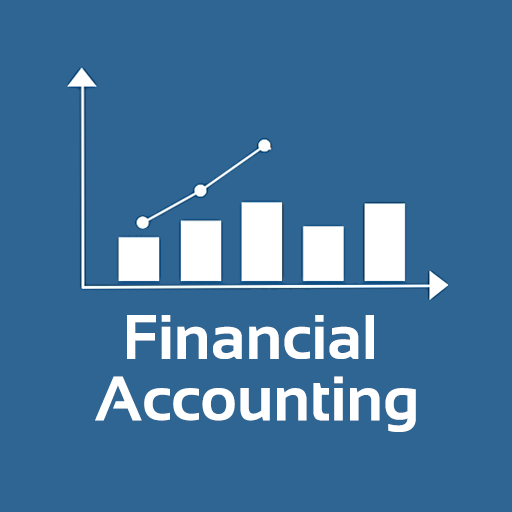
1. Accounting financial Accounting Total-beginners To Advanced
What you’ll learn
- An Introduction to Accounting, The Double Entry Accounting System, & Recording Transactions using Debits and Credits
- Analyze, use, and create from scratch financial statements including a balance sheet, income statement, statement of equity, and statement of cash flows
- Use the concepts of the double entry accounting system
- Record financial transactions using the accounting equation
- Record financial transactions using debits and credits
- Learn when and how to use accounting methods such a the accrual method and cash method
- Apply the concepts related to the revenue recognition principle and the matching principle to recording transactions and reading financial statements
- Record period end adjusting entries and be able to explain why adjusting entries are necessary is a well designed accounting system
- Record merchandising transactions. Record transactions involving inventory
- Track inventory using cost flow methods like FIFO, LIFO, and Weighted Average Methods
- Create and use subsidiary ledgers like accounts receivable by customer and accounts payable by vendor subsidiary ledgers
- Learn how to create and use special journals and how they can be part of an accounting system
- Construct and interpret a bank reconciliation, one of the most critical internal controls
- Be able to implement internal controls over cash
- Value account receivable and record bad debt expense using either the allowance method or direct write off method
- Calculate depreciation using different depreciation methods including straight line depreciation, double declining balance, & units of production depreciation
- Record payroll transactions and calculate net pay and income tax withholding
- Record transaction specific to partnerships including methods to allocate net income to the partners, adding a new partner, and a partner leaving or selling a partnership interest
- Record transaction specific to a corporation including selling capital stock, selling preferred stock, buying treasury stock, issuing cash dividends, and issuing stock dividends
- Record transactions related to the issuance of bonds
- Record transactions related to notes payable. Learn to create an amortization table.
- Construct a statement of cash flows using the direct method and indirect method. We go into more detail about best practices to construct a statement of cash flows than any other course we have seen
Requirements
- This course is an excellent course for beginners as well as advanced learners. We start from the basics and move all the way through financial accounting topics in a systematic way. We will be using some Microsoft Excel worksheet, but we will start off slow as we learn Excel as well. If you do not have Excel, you may be able to open the files using Google Sheets, which is free. If you do not have either of these options, you can move forward without this component of the course. However, Excel worksheets are where learners get to really engage with the material and work through problems. Therefore, we do suggest getting access to Excel or Google Sheets at all possible.
Description
Recently updated with A LOT of added content.
Includes downloadable e-book in multiple formats so you can open it on your tablet or Kindle – Formats (EPUB, MOBI, PDF).
This course is an excellent supplement for students or anybody who wants to learn accounting and also have something they can refer back to in the future. Udemy generally provides lifetime access to the course.

2. Managerial Accounting / Cost Accounting
What you’ll learn
- How a job order costing system works and what type of business would use it
- How a process costing system works and what type of business would use it
- Cost volume profit analysis (CVP) and how CVP tools can be used to make business decisions rationally
- How to construct a master budget
- How to construct a flexible budget and use it to make rational decissions
- How to use responsibility accounting to hold different areas of a business accountable in a rational way
- Relevant cost analysis as a took to make rational business decissions
- Time value of money techniques to help make decision about long term projects
Requirements
- None

3. Advanced Financial Accounting
What you’ll learn
- How to apply different accounting methods based on levels of control
- How to account for acquisitions and investments
- Work comprehensive acquisition problems in Excel
- Work consolidations when the subsidiary is 100% owned
- Work consolidations when the subsidiary is not 100% owned and there is a noncontrolling interest
- Work consolidations when the fair value of assets and liabilities at the date of acquisition differs from the book value resulting in a differential
- Work consolidations where there are intercompany transfers such as upstream (subsidiary to parent) and downstream (parent to subsidiary) sales of equipment and inventory.
- Work consolidations where there are intercompany transactions related to debt, bonds, and interest.
Requirements
- Should have an understanding of financial Accounting concepts
Description
Advanced financial accounting will focus heavily on intercorporate acquisitions and investments in other entities.
Why learn advanced accounting?
Even if we do not work in an area that applies advanced accounting concepts directly, learning them is very useful, because it refines our skills on the understanding of double-entry accounting, its concepts, and practical application.
Learners will learn how to account for intercompany transactions related to debt, bonds, and interest.
Author(s): Robert (Bob) Steele




0 Comments